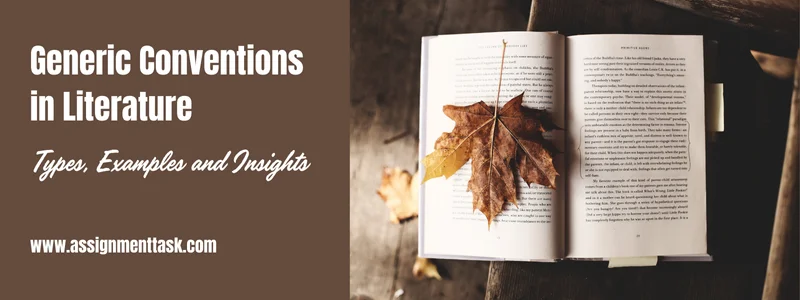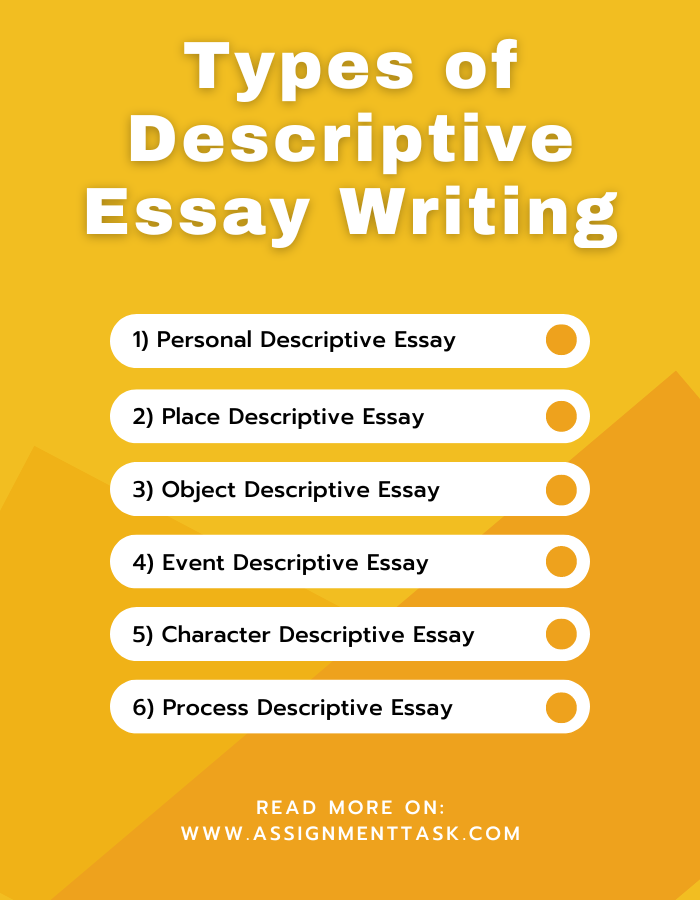Generic Conventions: Key Elements of Literary Genres
- Assignment Task Blog
- Aug 20, 2025
- Academic Writing
Weekend already, or are you just sneaking in some shows and movies to chill out? Whether it’s Sunday or Monday, we all love a good binge-watch, a series, a movie, or a play. But here is what most of us never really think about: what goes on behind the scenes to make these stories so engaging. That’s where something called “Generic Conventions” comes in. Sounds fancy, right? But don’t worry! It is super interesting once you get the hang of it. We are simply breaking it down in this blog, so stick around until the end!
What Are Generic Conventions in Literature?
The generic conventions are the elements shown by the author in their literary works. These elements help your readers to categorize the whole work in any special category known as the "genre".
The generic or victims are easy to understand. The majority of the horror stories have a dark background, while the children's animated movies are full of a shining, utopian world. In a genetic convention, things define the work category of a writer.
If you are studying English literature or exploring how plays are created, understanding this concept inside out is a must. That’s why seeking English Assignment Writing Help can be a smart move. It gives you a clear, concise grasp of these conventions and makes learning a whole lot easier.
Different Types of Generic Conventions with Literary Examples
-
Setting: like different characters in a story, the setting plays a very important role. This setting is a type of generic convention where you need to set the play. They are as much important as the characters in any story or theatre. It portrays the idea, emotion and tone of any play. Ex: In any horror genre story, the author describes an eerie location with deep silence. In this situation, the location is defined as any abandoned area where the characters are scared and helpless. Thus, it creates a setting for the readers to imagine the entire situation.
-
Theme: It is regarded as the very central concept on which your story revolves. The examples of generic convention in literature can be made clear and stated by "love" or "solitude." This theme art is not first stated but is conveyed via actions, thoughts, dialogues and feelings of the story characters. The Hobbit's story is one of the most popular adventurous ones. The main theme of the story that the majority of the readers assume will be an adventure, but the actual theme here is "bravery". The movie, which is based on the book, shows how a timid hobbit went from hiding from threats to facing challenges.
-
Characters: It is the primary type of generic convention via which the play or story is narrated. In any story, the character can be a person, animal, or creature. Here, the author considers the story's characters as the backbone to convey any messages or actions in the whole story. There can be a single or even multiple circles that can deliver various messages or even actions. Ex: In most science fiction movies or books, the characters are described as half robotic or involve machine parts. In horror genre stories, the characters are either grotesque being that scare other people or are depicted as ghosts. However, these characters are the most memorable part of any literature.
- Iconography: This is a concern regarding the science of classification, identification, and description of symbols as well as themes in any subject matter in parts of visual art. This also refers to using the imagery as a piece in your writing. Ex: The use of cowboy hats in Western movies and plays. This is a popular cultural symbol.
The examples we discussed are just a few types of conventions. If you want to dive deeper into others, like visual style, sound, special effects, or cinematography, getting online assignment help services can be a great way to strengthen your understanding and master the subject.
That’s where the Assignment Task comes in, the most reliable and trusted academic partner for clearing doubts, answering queries, and getting expert guidance. Our team is dedicated to supporting students in every possible way, so don’t hesitate to reach out when you need a helping hand.
Understanding Literary Genres: How Conventions Shape Storytelling
The generic convention always helps in defining the genres a lot. The genres are basically categories in the sphere of literature that are based on certain common situations.
Ex: In the action movies or the books, the most common aspect is the actors' sequences and fights with the different characters. Thus, the genres always create a style or category in literature that you must follow to target specific audiences. Here, the number of genres is also not fixed since it changes along with the social changes.
The main genres in literature:
The Major Literary Genres and Their Common Conventions are fun in English literature. These are further subdivided into specific sub-genres. These are as follows:
-
Poetry: American poet Howard Nemerov once defined the poetry genre as a literary form to invoke a concentrated and imaginative awareness of various experiences, with any specific emotional response to be chosen and arranged for a meaning or rhythm. Poetry is a genre in literature that shows the beauty of your writing by using words that are very much formed logically.
-
Lyrics: These are the short form of the poems.
-
Epics: These are the lengthy poems that describe the extraordinary beings.
-
Dramatic: This combines the drama with the other genres, like tragedy or comedy.
-
Fiction: This is one of the major genres in literature. This genre makes the writing very imaginative and amazing. Here, you need to write something that does not exactly match with the real world.
-
Fantasy: It is the most diverse and popular fiction genre.
-
Science Fiction: It is one of the most popular subgenres of the fiction category. This combines the fictional genre with certain scientific terms.
-
Non-Fiction: This is just the opposite of the fictional category. This is a sort of creative genre that focuses on all the real-world theories.
-
Autobiography: This is a life story written by oneself.
-
Biography: This is writing about someone else's life.
-
Drama: It is an amazing part of literature. This genre takes all the real-life staff with a dramatic touch.
- Folklore: A genre that includes sayings, stories, and legends that have been orally transmitted through generations.
These are the best generic conventions in literature.
If deadlines are around the corner and you struggle to grasp these conventions fully, don’t stress. With our instant assignment help, you can quickly clear your doubts and understand the topic in a much simpler way, right when you need it the most.
Why Generic Conventions Matter in Literature and Media?
The generic convention is important in literature because of the following major reasons:
-
Making up a genre: The most important thing in any genre convention is making up a particular category or genre. The genetic convention is used to make foundations for different genre.
-
Targeting a niche audience: Not all audiences like the same genre. Some like romance, while others may like action like this. Thus, you must always use a suitable generic convention for a specific niche of the audience's liking, any particular category.
-
Helping with the imagination: If you ask anyone why they like literature, they will say that they love it since they like imagining another world through the books. A good generic convention always helps this imagination.
- Creating the variations: Some authors use the generic conventions to escape the limits of any traditional genre and try to make their own version. Ex: the "Magical Realism" that combines the Non-fictional realism element with the fictional fantastic elements.
Guide on Writing a Literature Review
A literature review consists of the following parts:
Introduction
- You need to write it in a brief manner, writing one paragraph.
- Introduce to your audiences the main subject matter by a good introduction
- Narrow down the larger subject matter into smaller, manageable topics.
- Give the significance of your topic here
- Formulate the research questions
- Explain the scope of the story coverage
- Write a layout of your organization for the review
Body
- Here, you need to provide all the background information like historical perspectives, concept definitions, etc.
- Group the research according to the trends, themes, approaches, etc.
- Here, you need to summarize all the individual items with a detailed description
- Write all the citations with a proper description of the literature, with your proper analysis
- You always need to show the readers how it connects to your overall research approaches
- You also need to point out any methodological flaws or gaps in the research finding inconsistencies.
- In the body, you always need to summarize all your major contributions from studies, research, etc. Also, point out the gaps in the published articles.
Citation
- You always need to add a proper citation to your generic convention.
- Citing the resources is needed for all types of writing projects
- The citation can be direct as well as paraphrased
- Paraphrase the sentences
- Rewrite all the sentences in your own words
- You always need to maintain only one citation style throughout your literature review, and you cannot use more than one citation in your paper.
You always need to write an excellent summary covering all the major subjects matter in your paper.
Recommended: Complete Guide on Writing a Literature Review
Conclusion
So, the next time you’re curled up watching your favorite show or movie, you’ll know there’s more to it than superb acting or cool effects. Those little patterns, themes, and generic conventions tie the whole story together and make it feel familiar yet exciting.
Pretty interesting! Now you can watch with a fresh perspective and maybe even spot these conventions in action! Thanks for sticking around, and who knows your next binge-watch might feel a little smarter.










